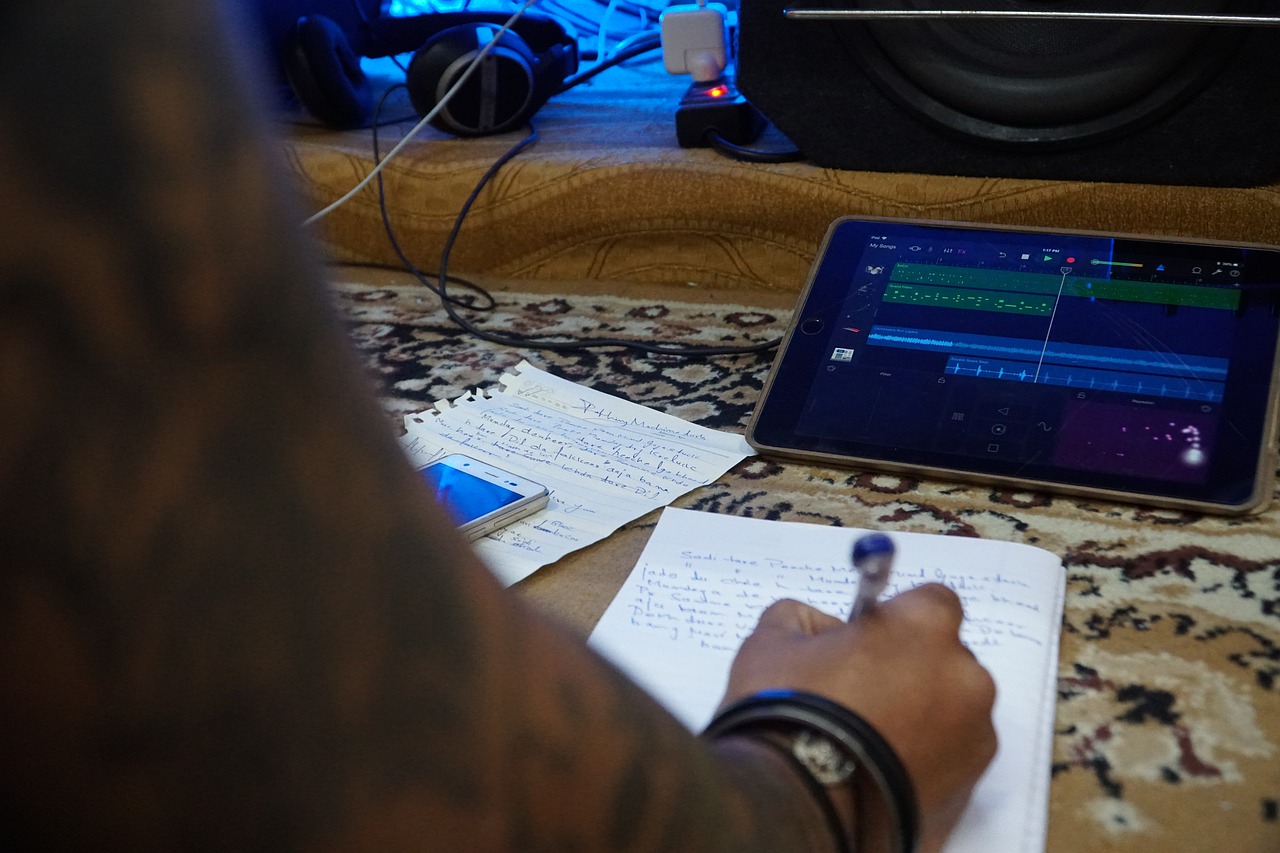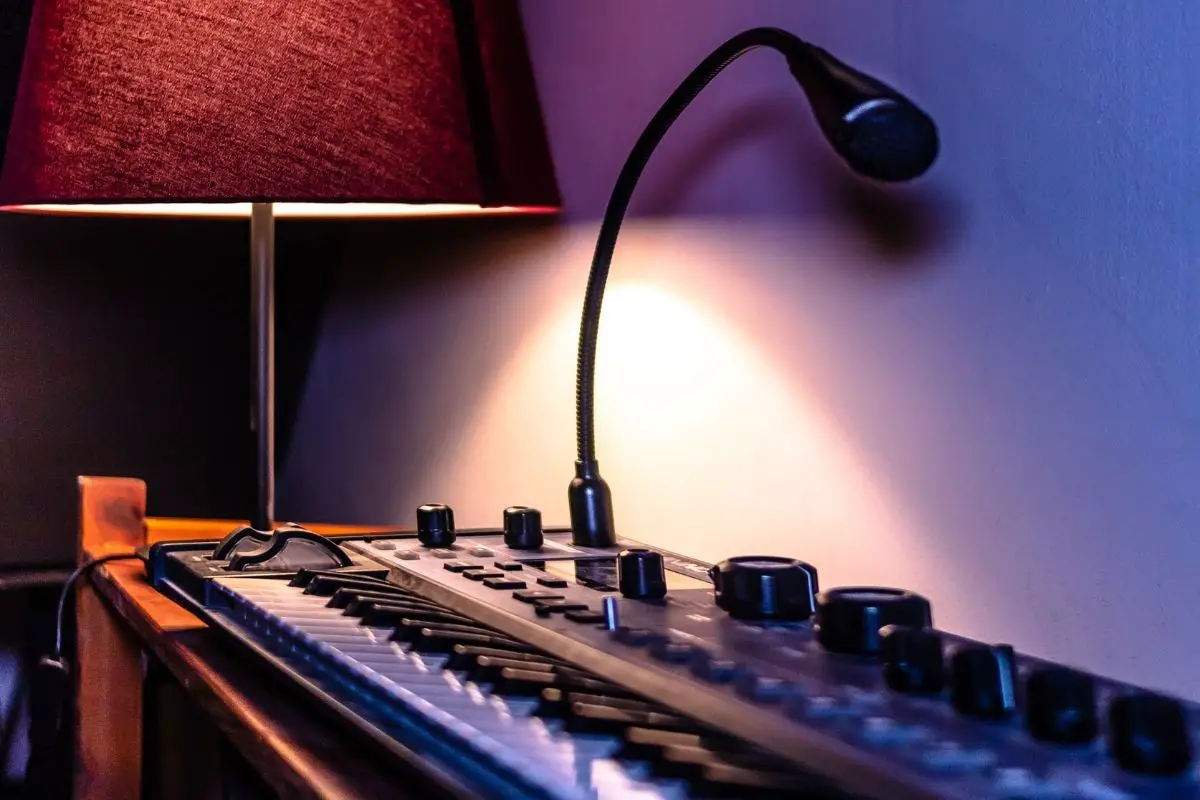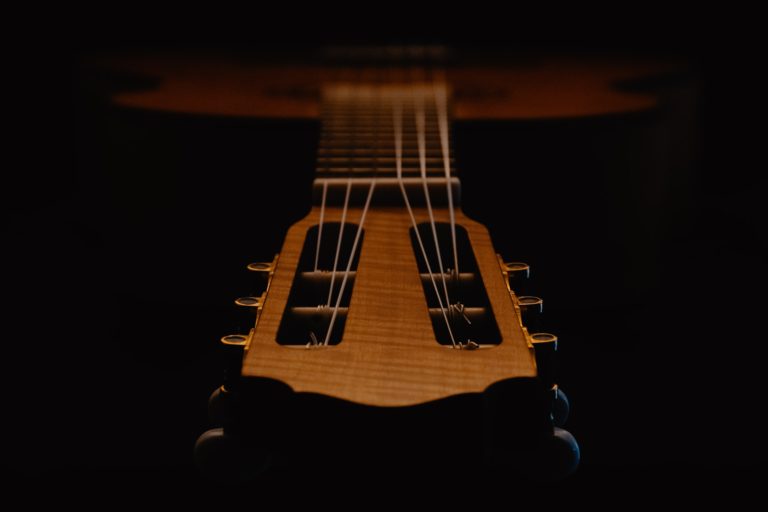Songwriting Ideas for Beginners
Staring at a blank piece of paper can feel daunting when writing your first song. Words can flow out of some people, but they struggle with riffs. For others, riffs come naturally, but the melody does not. There is no one right way to write a song.
If you search for different songwriting ideas for beginners, you are in luck. We have put together a few songwriting tips to help you write hit songs in the hard rock and metal genres. Even if those aren’t your preferred genre, many of these tips will work well for pop and other genres, too, so keep reading to learn more!
Try Starting with A Riff
Many professional songwriters, like One In The Chamber, start their masterpieces with a single riff. You could choose to start it with a drumbeat or other musical instrument that you like to play.
If you want to start with a riff, you can do what famous musicians like Chris Cornell and Eddie Van Halen do. The two famous musicians play for hours until they come up with a take they like or keep a recorder by their bed to record a riff that’s in their mind when they are first waking up.
If you don’t have your instrument handy, You could choose to hum the riff into a recorder and play it later if you don’t keep your instrument bedside. But hey, if you sleep with your guitar, no judgment.
You will be surprised when inspiration comes to you. For that reason, it’s a good idea to always carry a recorder around with you so that you never let a potentially amazing riff slip your mind.
Deciding What to Do with the Riff
Once you have a riff you love, you have to decide where you want it to go in the song. The take could become:
- A verse
- The chorus
- The intro
The riff’s length and feel will determine where in the song it will best fit.
Pattern Your Verses
Once you have a general idea of what you want your song to sound like based on your initial riff, you can start creating your verses. If you decide your riff will be your first verse or intro, building your verses before your chorus may make sense.
If your riff will be your chorus, then first tweak it to create your chorus and then work on your verses.
After you write your first verse, you should pattern the rest of your verses off that original rhythm. It makes the song flow better and makes the songwriting process easier.
Adding Life to Your Chorus
Your chorus should stand out from every other aspect of the song. It is what is going to get stuck in people’s heads and draw them in. If you look at it from the instrumental viewpoint, there are a few ways you can go about making it stand out.
Play More Chords Per Bar
The key to a chorus that will hook someone is increasing the number of chords you play per bar than you do in any of the other sections of your song. This speeds up the number of changes per measure, helping the chorus come alive and stand out.
Lift Your Music
If you are looking to take your chorus to a higher point to make it stand out, all you have to do is move the key you are playing and up a minor third, and you’ve just built excitement into your chorus. This is a popular method used in various songs such as:
- “Rocking in the Free World” by Neil Young
- “Working for the Weekend” by Loverboy
Contrasting Your Melody
Your melody and riffs should contrast one another. This juxtaposition will help make the song sound much more interesting to your audience.
If your riffs create a sharp, heavy rhythm, your melody should use long-held mid-range notes. You’ll hear a great example of this if you listen to the song “End of Heartache” by Killswitch Engage. If your riffs create a longer, held-out rhythm, use a shorter, choppier melody.
Finding Your Melody
You don’t need to know the words right away. You can find your melody before ever writing a single lyric. Simply start playing your song on your guitar or piano and hum along to it. As you keep humming, you will begin to discover a melody that will work best with the riff you just created.
It is okay to try out different melodies before settling on one.
A good tip to consider is switching the melody up between verses to keep the listener engaged.
Often, listeners can become bored if there is too much musical repetition, even if the lyrics you put into it later are perfect. Sometimes, something as innocuous as inverting your chords will do the trick.
Using Your Melody in the Chorus
We just talked about how your chorus should stand out from the rest of your song. Another trick to do this is to have the melody do all the work for you. You can do this by keeping the chorus in the same key as you have been playing the verse, but now you can choose to jump the melody to a different place in the chord structure.
This will test the higher end of the singer’s range depending on how high you want to go with the melody. Examples of famous songs that use this strategy are:
- “Learn to Fly” by Foo Fighters
- “Second Chance” by Shinedown
- “The Fixer” by Pearl Jam
Finding Your Mood
When writing the lyrics to your song, consider what emotions the music evokes within you. If you have difficulty pinpointing how it makes you feel, consider playing it for some friends and getting their reaction before starting your lyrical quest. If the mood is confusing, you may need to rework your music.
Once you identify the mood of your music, you can go about writing lyrics that go along with that mood.
Using Ironic Lyrics
Now that you have discovered the mood you have created, you can decide to take your lyrics in the opposite direction or make them match the mood. Having your lyrics contrast the music’s mood will create irony between the lyrics and the music, creating a level of mystery behind the song’s true meaning.
For example, if the music you have created has a more somber mood, you could create happy lyrics. If your music sounds angry, your songs could sound sad. This contrast can be difficult to achieve, and the audience doesn’t always accept this, but when done correctly can create a very cool song.
Finding Your Lyrics
Once you have your melody and mood, you can start developing your song’s lyrics. This may seem simple, but for others, it can be the hardest part.
Our tip is to start to think about your song’s mood and how you would like to use it in your lyrics. If it is an angry song, why is the singer angry? Here are a few more questions to ask yourself to get an idea of what to incorporate into your lyrics:
- What does the singer plan to do about their emotion? (i.e., resolve, complain, wish, etc.)
- What happened to them that made them feel this emotion?
- What is it they are feeling at this moment? (ie. burning flames, butterflies, etc.)
Starting with Your Chorus
We strongly urge you to consider writing the lyrics for your chorus first. The chorus is what draws listeners into your song. It is arguably the most fascinating and vital aspect to a listener. Therefore, you should nail down how you want it to sound before writing the lyrics for the rest of the song.
Fitting Lyrics to Your Melody
Once you have figured out what you want your listeners to gather from the lyrics, you have to start getting them down on paper. Start by finding a few phrases you like, and then see if they fit in the melody you have already hummed to go along with your music.
If the lyrics don’t fit the melody, consider tweaking them to match or creating others. If you are in love with the lyrics, you may have to go back and tweak your song. Tweaking your melody is going to be a more challenging process, though.
Lyrics That Stick with You
The chances of you writing a song in one day are slim. Therefore, you should sing to yourself multiple different lyrical lines that you like and see if they stick in your head. If, after a day or two, you find yourself randomly singing your chorus over and over, it is probably good.
If you don’t find yourself having at least sections of your chorus stuck in your head, it probably isn’t as catchy as it should be, and you should go back and try to think of new lines.
Don’t get discouraged if this takes a while. It can take anywhere from a few days to a couple of months. In the end, though, you will be happy you waited for those perfectly catchy lyrics.
Starting with A Strong Intro
Once you have written your chorus and started to fill in your verses with background info, you should begin to work on your intro.
The intro should draw the listener into the song. Those first few seconds of your music can cause listeners to determine whether or not they are going to skip your song or listen to it. So, keep this in mind when you’re writing those key lyrics that set up the whole song’s mood and direction.
Rhyming Your Lyrics
Many people will tell you that the lyrics won’t matter too much as long as you have a good melody going. The truth, though, is if you want your song to succeed and have a chance of someday topping the charts, you need lyrics that resonate with your listeners.
As a beginning songwriter, you may be solely focused on the instrument aspect and be thinking to yourself, “I’m not going to top the charts, so my lyrics don’t matter that much.” The truth is, though, if you ever want your songs to be heard and enjoyed by the public, you need to write with the listener’s interests in mind.
The Challenge of Rhyming
When incorporating rhymes into your song, you are allowing your listeners to grab the hook phrase more efficiently so that they can sing along and enjoy the music even if they’ve never heard it before.
However, it can be challenging since rhyming severely constricts your ability to express your emotions in the words you want to use. It may be an easy task but for most, getting all your creative thoughts into lines that rhyme can be complex.
With this in mind, if you are writing for fun or are not concerned about your songs taking off one day, don’t worry too much about rhyming. As a beginner, you can focus on getting your thoughts down first and then consider going back to your original songs as you continue writing and incorporating rhymes into them later.
Consider Using A Lyric Writing Helper
As a beginner, it may take time before you genuinely grasp writing lyrics, and that’s okay. Writing songs comes easier to some people than others. Luckily, a few different tools can help you become a better lyrical writer.
Using Lyric Writing Books
Many different lyric writing books are available that can help you improve your songwriting skills. A few of these include:
- How to Be a Hit Songwriter: Polishing and Marketing Your Lyrics and Music by Molly-Ann Leikin
- The Craft of Lyric Writing by Sheila Davis
- Writing Better Lyrics by Pat Pattison
Using A Lyric Writing App
If you don’t want to spend your time reading a book, you can download an app to assist you in your lyric writing. A few good ones to consider are:
Using A Lyric Writing Website
We do not highly recommend this, but if you are stuck, you could always input a few ideas into a lyric writing website and have it spit out a song for you. If you choose to do this, we highly recommend using it simply as an idea starter and then revising the lyrics to be your creation.
Here are a few sites to consider:
Here’s a video with 50 additional ideas
Use the Cut-Up Technique to Find Your Lyrics
There are many different techniques and ways to come up with your lyrics. A popular technique used by David Bowie is the ‘cut-up’ writing technique. This technique can make your writing process more creative and might result in an idea you would have never thought of before.
To use this method, you write down a couple of paragraphs about a subject (i.e., the topic you have decided on is how you want to express your music’s mood). Then you cut up the paragraphs into four- or five-word sections.
Once you have all your pieces cut up, you can rearrange them to create a new text that may spark ideas in your mind for potential lyrics. You can even choose to strictly use the cut-up combinations of words as you rearrange them.
Other famous songwriters have also used this technique, such as:
- Kurt Cobain
- Thom Yorke
Consider Implementing A Bridge
Many rock songs have a bridge within them. You don’t have to include one, but it can add contrast to the rest of your piece to make it that much more exciting and unique.
Implementing A Bridge
As a beginner, you may have questions about implementing a bridge into your song correctly. Remember, there is no right or wrong way to write a song. This includes incorporating a bridge, but a bridge is usually placed after a chorus section.
The bridge is constructed by either:
- Changing the meter
- Using a different chord progression
- Using a faster tempo
- Using a new key
- Using a slower tempo
Consider Implementing A Solo
If you decide to use a bridge, you could connect a solo to your chorus.
Many people see solos as a chance to add additional art to their song that isn’t redundant to other sections. It is an opportunity for the drummer, guitarist, or whomever to showcase their talent.
Typically, you will place a bridge before or after an instrument solo. Whether or not you want to incorporate a solo is entirely up to you.
Ending Your Song Memorably
There are many ways to end a song. Whatever method you choose should be memorable to your listener, though. You don’t want to write a killer song and then have it boring at the end.
A song needs to be written entirely through until the last second, kind of like a book. The climax of the book (the chorus of the song) should be the hook and the most memorable, but no one forgets how a good book ends (nor should they forget how your song ends).
Ways to End A Song
A few popular ways to end a song include:
- Cadences (a series of chords that resolve to the root chord)
- Dissolution (deconstructing the music and playing with rhythm instead of written parts)
- Go Acappella (showcase your vocals)
- Increase the level of excitement by playing faster and harder at the end
- Seamless transition one song into the next (so it’s like there is no ending)
- Subtraction (letting one instrument fall out at a time until there is just a beat)
- The false beginning (playing the first couple notes of a previous section)
- The loop (connect the end to the intro)
Any of these techniques will leave your listener intrigued and satisfied through to the very end of your song.
Finding Your Title
Naming your song can indeed be done at any part of the writing process. Some songwriters even begin by naming their song before thinking of a lyric or creating a riff. If you name it first, you should focus on the mood you want to convey with the music and try to convey it with your title.
If you decide to name your song after you have written it and need some help, here are a few strategies to try:
- Pick a number (i.e., the date you created your, the track number, etc.)
- Pick any lyric you like in the song and make it the title
- Summarize the piece in a single word or phrase
- Use a lyric that didn’t make it into the final version of the song
- Use an adjective or verb that describes your music (i.e., “green” for a song about the woods)
- Use a synonym for the song’s hook line
- Use a word from another language that describes your song
You can, of course, come up with a unique way of titling your piece. Maybe you figure out your title halfway through and end up changing your lyrics to fit it. There is no one way to go about it. Simply do what works best for you and try different techniques for different songs you write.
Themes to Get You Started
Your song needs a theme. You can either start by identifying your theme or let it come to you through the mood you have created from your riffs. Some people struggle to figure out what they want their song to be about, so below are a few common themes in the hard rock and metal genres.
Common Themes in Hard Rock
Hard rock tends to deal with a range of topics, including:
- Lifestyles
- Rebellion against the establishment
- Romantic love
- Sex
- Social concerns
Common Themes in Metal Music
Metal is a subgenre of rock. Music that falls into this subgenre will often deal with darker themes. It focuses on the reality of life, not always happening the way we want it to happen.
Common themes for this subgenre include:
- Apocalyptic
- Darkness
- Death
- Environmental issues
- Evil
- Political propaganda
- Social issues
- Teenage life
- War
Finding Your Unique Theme
These are just a few of the most common themes within the hard rock and metal genres. You can use them to get you started, or you can come up with one of your own.
It may be easier to pick a commonly used theme as a beginner. However, if you wish to play around with less common ones, that could help create a memorable song.
Consider Starting with A Melody
If you are struggling to go through the above process, you may want to consider starting with your melody first. Not everyone can create riffs they love and then force lyrics to match those riffs, and that’s okay.
As we keep reminding you, there is no one right way to write a song. You have to do what works best for you. If lyrics and melodies come to you quickly, then start with those.
The Power of Melody
It doesn’t matter how fantastic a guitar riff is if your listener isn’t going to remember it. A strong melody, though, that will stay stuck in their heads for days.
Start by humming out memories and forming words from them. Even in hard rock and metal genres, a killer melody will carry your song a long way, so if you are more comfortable starting at this step, do it.
Moving to The Riff
If you start with the melody first, make sure you still contrast it when you develop your riff. This will help to intrigue your audience more.
Tips from Other Genres
Even though you are interested in writing a hard rock or metal song, it doesn’t mean you can’t pull techniques from other genres. Doing so can add a level of complexity and intrigue to your music.
Here are a few tips and tricks used in classical melodies that you could consider using in your song:
- Avoiding too many low points
- Implementing one high point per melodic line so that it builds and decays rather than sustaining one intensity throughout
- Not using too many repeated notes (becomes tedious for the listener)
- Using a melodic rhythm that is more adventurous towards the end of the phrase
- When approaching a note by leap, leave by stepping in the opposite direction
These are just some suggestions from a genre that is probably the exact opposite of hard rock and metal, so you do not have to use them. However, they can make your song more interesting to listen to if you decide to follow them.
Writing Your First Songs
We have stressed this throughout, but I need to stress it again. Not everyone writes a song the same way, and that’s okay. If you don’t want to use all of these ideas, you don’t have to. These are simply to help get you started and find what method best suits your creative style.
When you first start, songwriting can feel challenging to master. Trying to find riffs you like and catchy lyrics can feel impossible. All you can do is take your time and try different techniques. With enough dedication, you will be a songwriting machine in no time.




![How To Start a Music Career [8 General Tips and Considerations]](https://www.bythebarricade.com/wp-content/uploads/2023/05/123027830_l-1-1024x512-1-768x384.jpeg)




